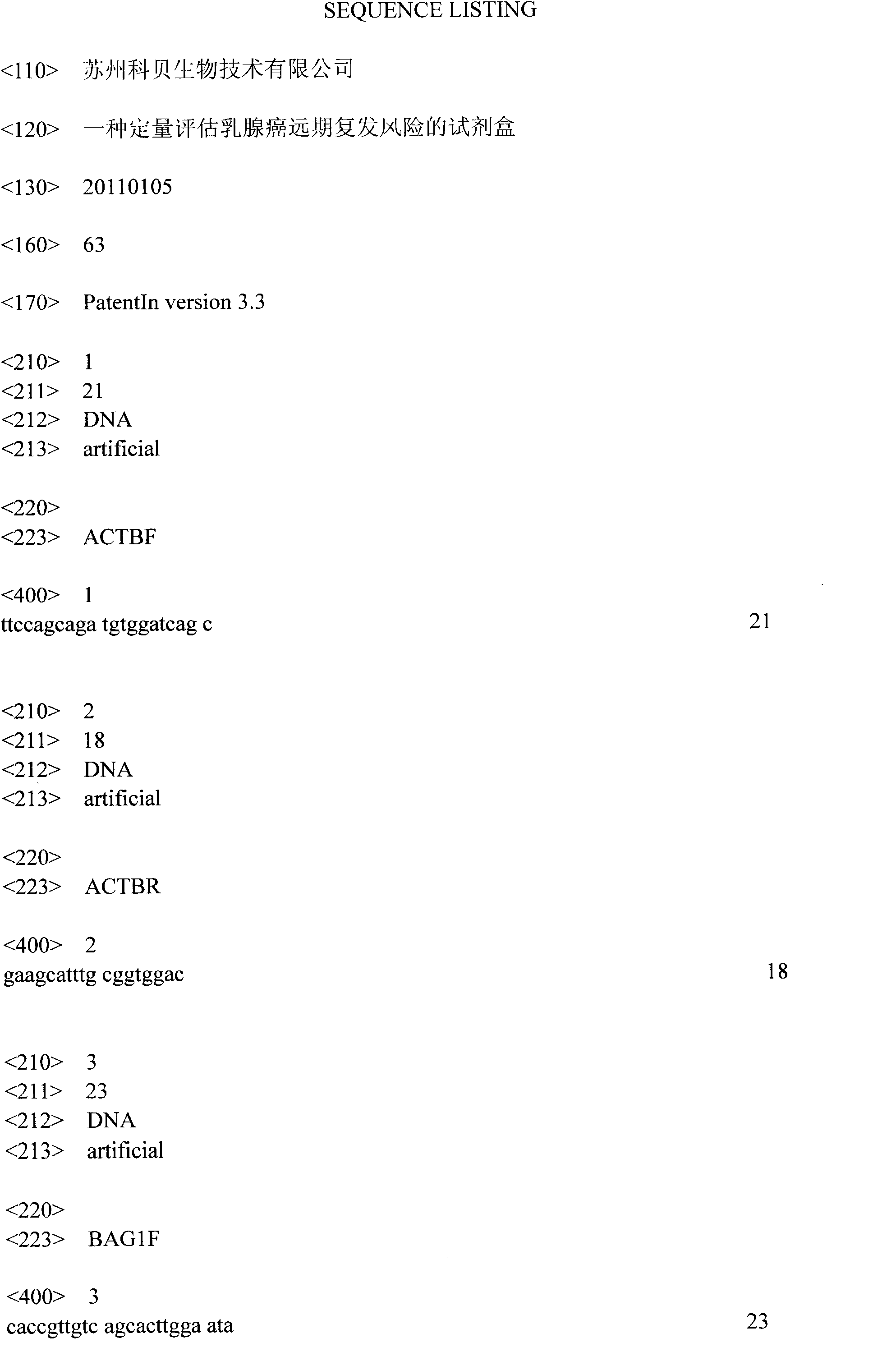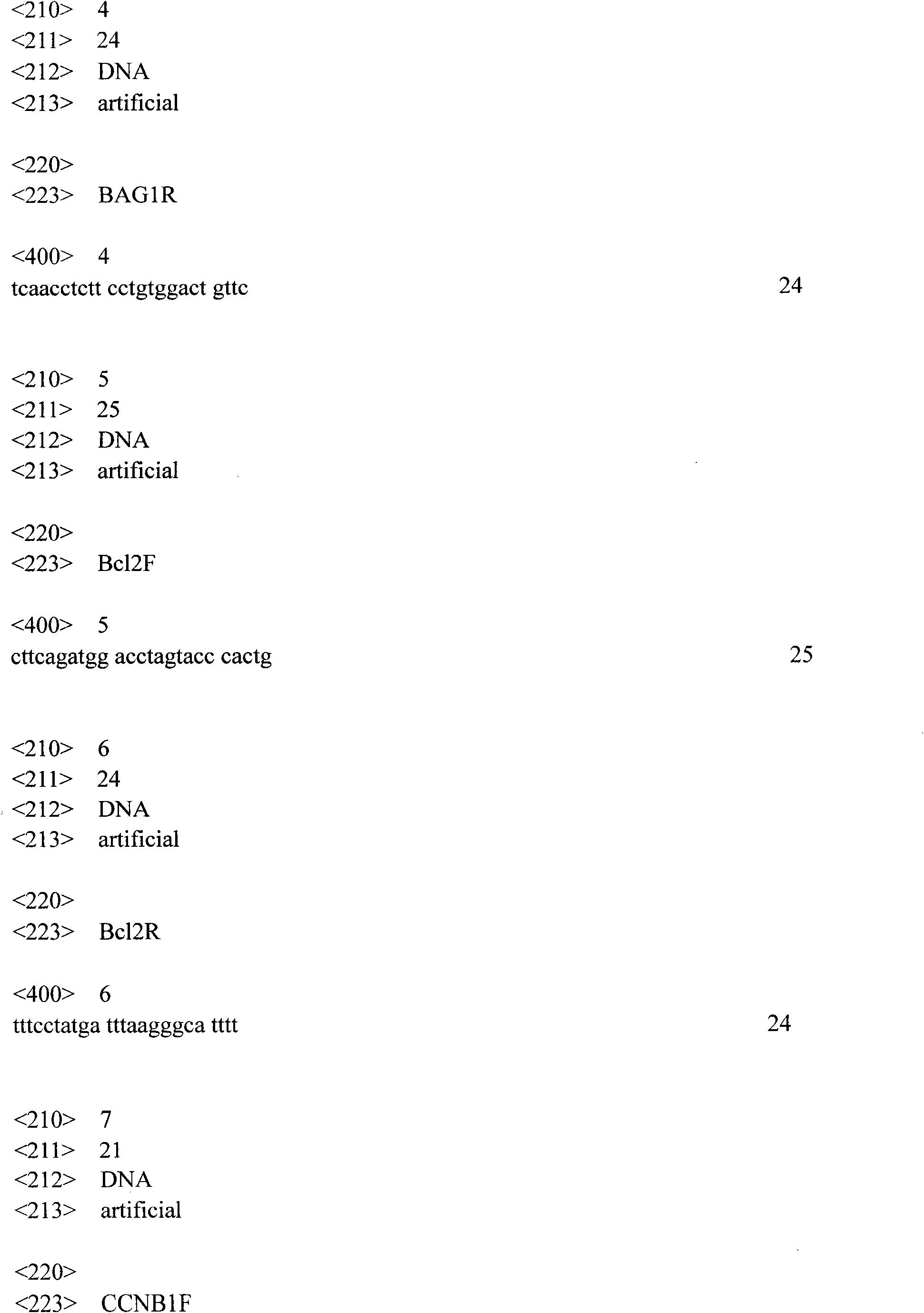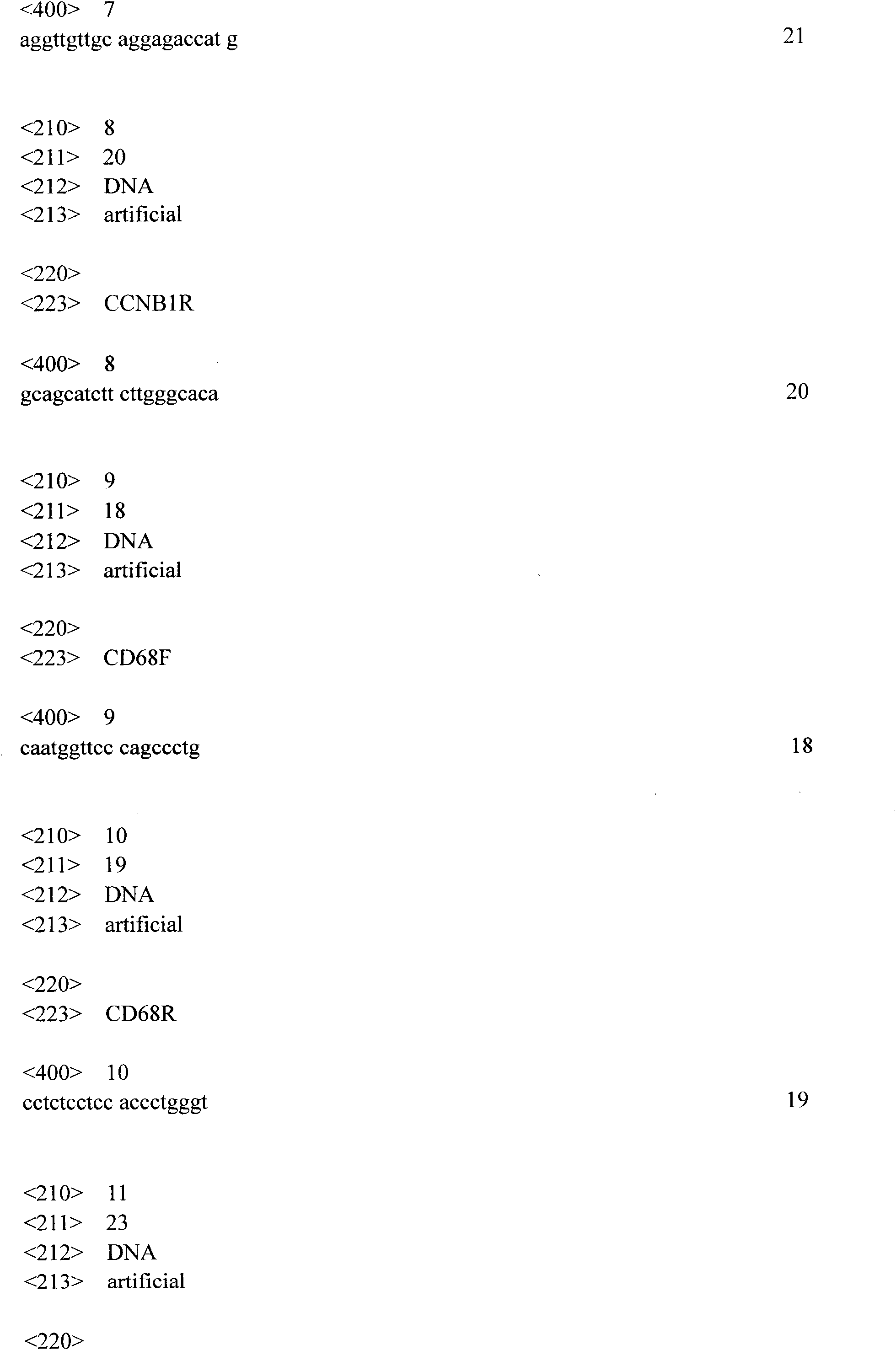Reagent kit for quantitatively assessing long-term recurrence risks of breast cancer
A long-term recurrence and quantitative evaluation technology, applied in the direction of material excitation analysis, microbial measurement/inspection, fluorescence/phosphorescence, etc., can solve the problems that affect the development of detection and less attention, and achieve stable detection results, low detection cost, and easy operation. simple and fast effect
- Summary
- Abstract
- Description
- Claims
- Application Information
AI Technical Summary
Problems solved by technology
Method used
Image
Examples
Embodiment 1
[0106] Embodiment 1, the selection of clinical specimen and RNA extraction
[0107] Paraffin samples from the primary site were taken, and qualified tissue samples were screened after HE staining of tissue sections, and samples with less than 5% tumor cells were excluded.
[0108] Total RNA was extracted from 6 paraffin tissue slices cut into 10 μm thick by Beijing Huamei Shengke Biotechnology Co., Ltd. (Qiagen, product number: 74106).
[0109] Total RNA needs to be treated with DNase I to remove DNA impurities.
[0110] use PCR is for β-actin DNA (ABI, product number: 401846) to detect whether there is any DNA residue, if there is any, it needs to be treated with DNase I again. Quantification of total RNA.
Embodiment 2
[0111] Embodiment 2, reverse transcription
[0112] The specific primer working solution concentration of 21 genes is 10 μM, 0.4 μl of reverse primer solution (final concentration is 200nM) is mixed for each of the 21 genes, 2 μl of 10×RT-PCR buffer (10 is the dilution factor), and dNTP is mixed Solution 4 μl (final concentration is 500nM), RNase inhibitor 1 μl (10 units), reverse transcriptase 1 μl (4 units), RNA template extracted in Example 1 50ng, and the remaining volume was supplemented with water.
[0113] Mix the upper amplification system evenly and incubate at 37°C for 60 minutes.
Embodiment 3
[0114] Embodiment 3, taqman-real-time fluorescent quantitative PCR
[0115] The 21 genes were detected by fluorescent quantitative PCR, and one PCR reaction was performed for each gene. The reaction system was prepared as follows: 200 nM each of the forward and reverse specific primers, 2 μl of 10×PCR buffer, 1.6 μl (200 nM) of dNTP mixture, 0.1 μl (0.5 units) of DNA polymerase, and 100 nM of taqman fluorescent probe , 0.8 μl of the reverse transcription product in Example 2 (equivalent to the reverse transcription product of 2ng RNA template), and the remaining volume was supplemented by water.
[0116] The amplification reaction was performed at 95° C. for 15 minutes, 95° C. for 10-15 seconds, 60° C. for 10-15 seconds, and 72° C. for 10-15 seconds, for 30 cycles, and 72° C. for 7 minutes. After the amplification reaction, the Ct value of each gene was recorded, representing the expression level of each gene.
PUM
 Login to View More
Login to View More Abstract
Description
Claims
Application Information
 Login to View More
Login to View More - Generate Ideas
- Intellectual Property
- Life Sciences
- Materials
- Tech Scout
- Unparalleled Data Quality
- Higher Quality Content
- 60% Fewer Hallucinations
Browse by: Latest US Patents, China's latest patents, Technical Efficacy Thesaurus, Application Domain, Technology Topic, Popular Technical Reports.
© 2025 PatSnap. All rights reserved.Legal|Privacy policy|Modern Slavery Act Transparency Statement|Sitemap|About US| Contact US: help@patsnap.com



